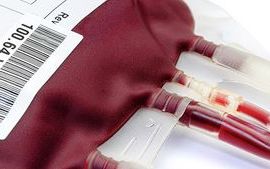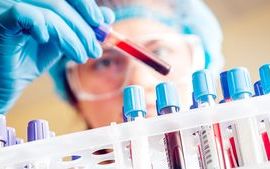- Published:
- 23 August 2023
- Author:
- Professor Marta Cohen OBE & Dr Srinivas Annavarapu
- Read time:
- 5 Mins
Paediatric and perinatal histopathology is a subspecialty that focuses on the study of diseases and pathogenic mechanisms in fetuses, infants and children (up to the age of 16 years) through the use of gross and histological examination and the support of a broad range of ancillary investigations. This specialty is key to the diagnosis of a variety of conditions that may have an infectious, metabolic, neoplastic or immunologic nature and/or which may be secondary to chromosomal defects or to molecular alterations. In many cases, diagnoses can help to screen other family members who may be affected.1
The perinatal autopsy not only provides information about the cause of fetal loss and helps parents in the process of closure, but also gives information that aids treatment in subsequent pregnancies, has a role in audit and is an important research tool. Yet, the provision of high-quality perinatal post-mortem and placental investigations in the UK must occur in parallel with improvements in stillbirth data quality, in maternal health and in the provision of adequate ante-natal, intrapartum and post-natal care.The paediatric and perinatal pathology (PPP) workforce crisis has been worsening since the early 2000s following the organ retention scandal.2 This has been made worse by the fact that pathology education in medical schools has continued to shrink over the last decade, to the point where most medical students have never been exposed to microscope and histological slides.
Current data indicate that only 55 of the 80 full-time equivalents PPP posts in the UK are filled, leaving 25 vacancies.3 Regional disparities are evident as the workforce is concentrated in London and the North West, leaving other areas like Northern Ireland and Wales with no or a singlehanded PPP in post. There are 9 PPP trainees and 3 more are expected to join soon. However, other full-time consultants will be retiring in the coming years or have been affected by work-related stress and sickness. Brexit has also been a contributing factor, with several European consultants leaving the country after this took place and fewer being recruited from European countries.
While some trusts have managed to maintain paediatric pathology services with support from general histopathologists with interest or previous experience in paediatric pathology, the same has not happened to perinatal pathology. This key area – dedicated to the study of the fetus, neonate and placenta – has been profoundly affected by the workforce crisis.Stillbirth is regarded as a marker of the quality provided by a health system during pregnancy and delivery. Although the exact global burden of stillbirth is unknown, a recent study published in The Lancet estimated that 2 million babies were stillborn in 2019, with more occurring in sub-Saharan Africa and Southeast Asia than in the developed world.4
Perinatal pathology played a significant role during the COVID-19 pandemic. During the Alpha and Delta waves in 2020 and 2021, perinatal specialists realised that the placenta could be affected by COVID-19; they then described what is now known as SARS-CoV2 placentitis. The perinatal pathologists were also able to link this new disease of the placenta to the cause of placental insufficiency which, in turn, leads to miscarriages and stillbirths in many cases. Perinatal pathologists also demonstrated the occurrence of vertical transmission of SARS-CoV2 in some cases, which helped to understand the physiopathology behind COVID-19 in pregnancy.5
The crisis in perinatal pathology is parallel to workforce problems affecting mortuary technicians with expertise in perinatal and paediatric cases. This also limits the capacity of the consultant workforce. Anatomic pathology technicians (APTs) play a key role to provide a high-quality service to patients and families. Mortuary staff receive and release bodies following Human Tissue Act requirements, helping with the evisceration at post mortem, reconstructing and preparing the body for viewing and, importantly, running the bereavement suite.
Families who have lost a child are always offered the option of a visit. Due to the lack of adequate workforce, many families travel long distances to the hospital where the post mortem was performed. It is the mortuary staff who receive and accommodate the family in the bereavement suite, supporting them during a very traumatic time in their lives. Importantly, the training of APTs has recently changed and to obtain this qualification they should undertake 2 years in an adult mortuary plus 1 additional year at a paediatric/perinatal mortuary, not leaving room for pure paediatric/perinatal training. This curricular change will, undoubtedly, reduce even more candidates to become paediatric/perinatal APTs.The NHS England Specialist Services Recruitment and Workforce Strategy Group was set up to solve the crisis. However, the results will not be immediate and the short term solution should be based on international recruitment. After 2 decades since the beginning of the crisis in PPP, the increased demand has not been matched with an appropriate training and recruitment strategy. Plans such as mutual aid and outsourcing have not been able to avoid the increasing backlog, which in some non-urgent cases may be 12 months. Upskilling biomedical scientists in placenta grossing and reporting, so they can be appointed consultant healthcare scientists, will be an advantageous resource that will help shape the future of PPP services.6
However, this can only be achieved if funding and educational support is in place to substantiate this curricular development. Investment in digital pathology and in research projects to aid the progress of artificial intelligence are part of transformation programmes, which are timely technological developments that can help transform pathology services in the NHS and beyond.
Unless the multiplicity of issues causing the current workforce are resolved, the paediatric and perinatal pathology service provision will deepen even more in the near future. The time to act is now.
Return to July 2023 Bulletin homepage
Read next
Medical examiners – successes and challenges
23 August 2023
The future of data in transfusion medicine
23 August 2023




